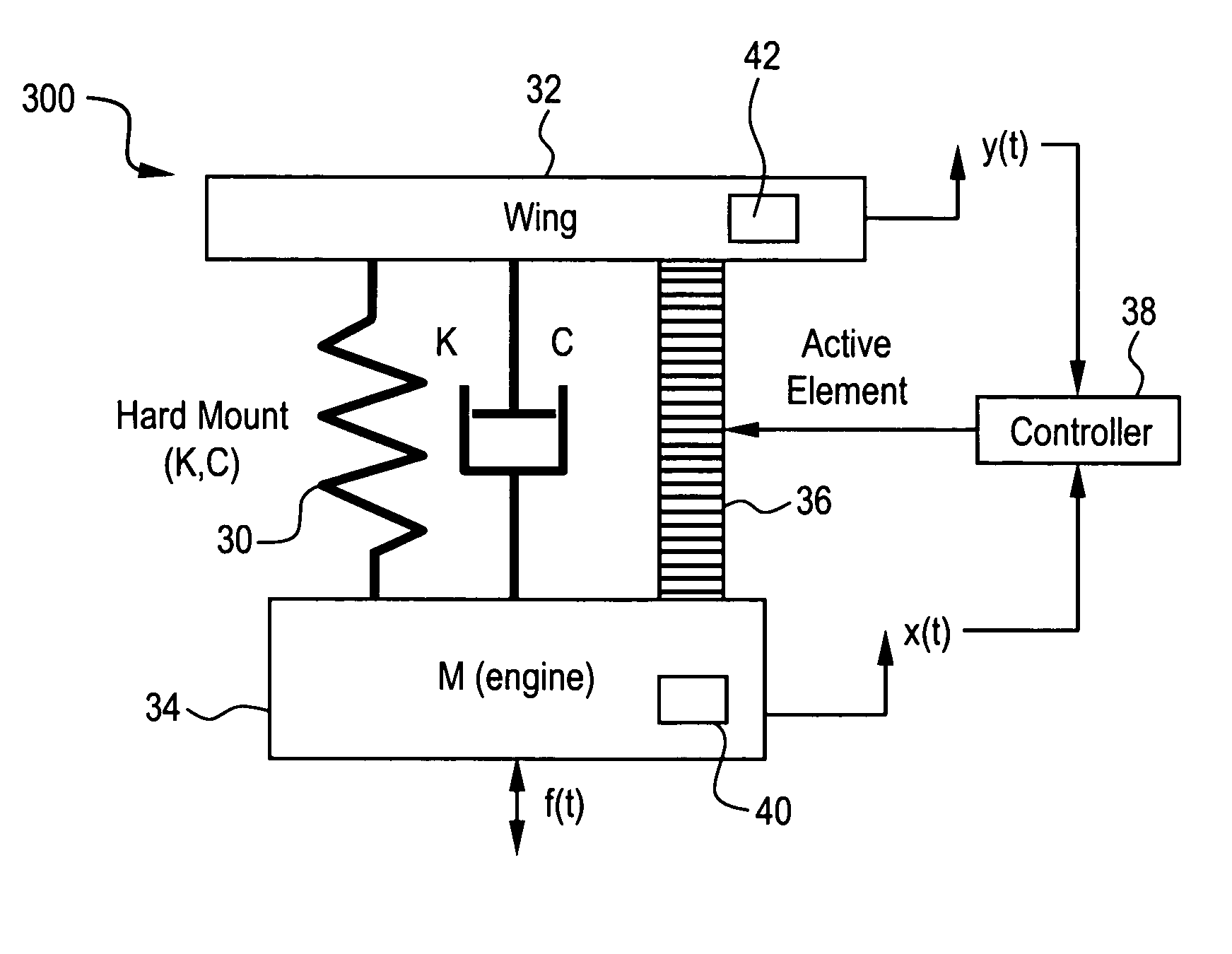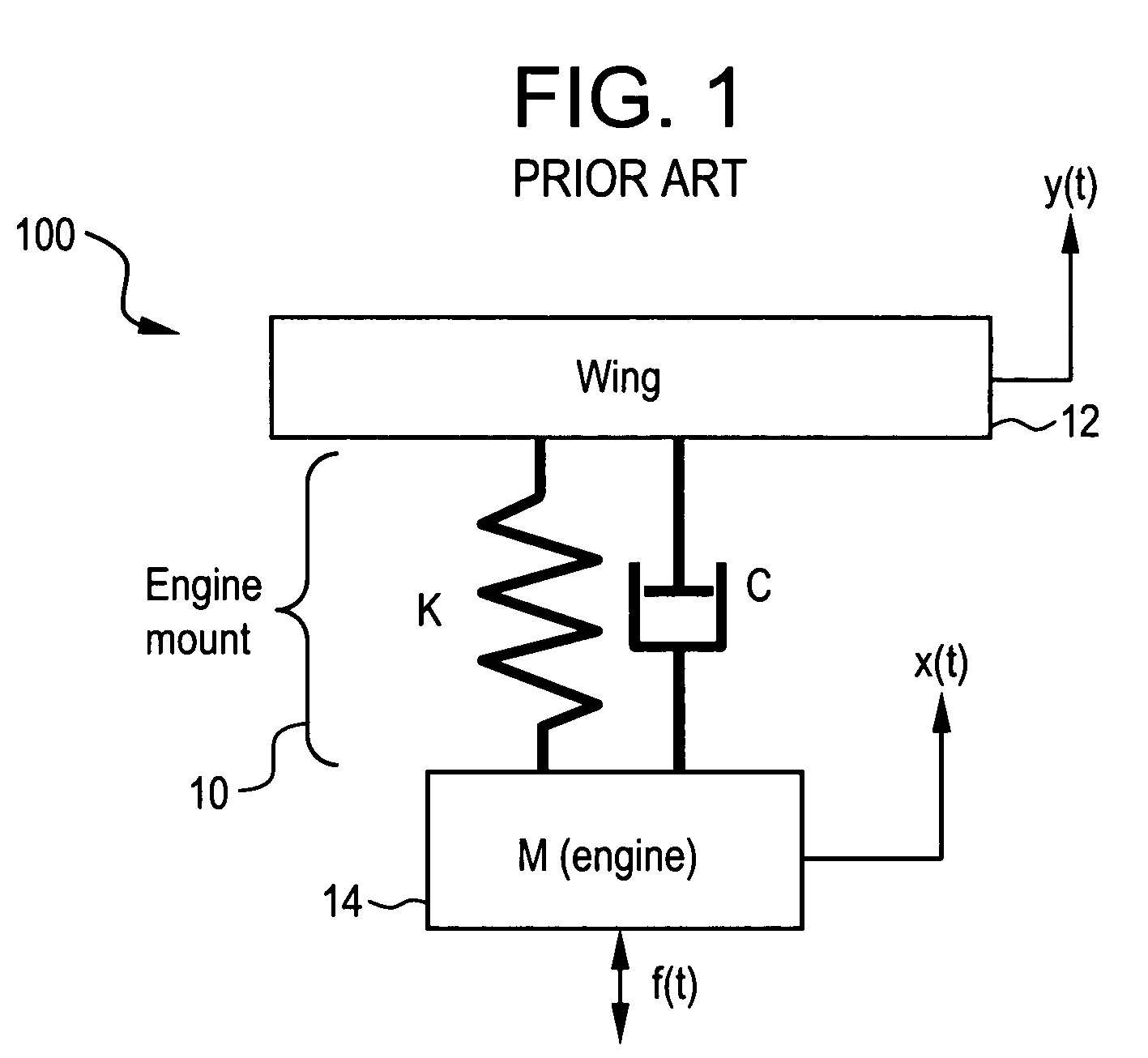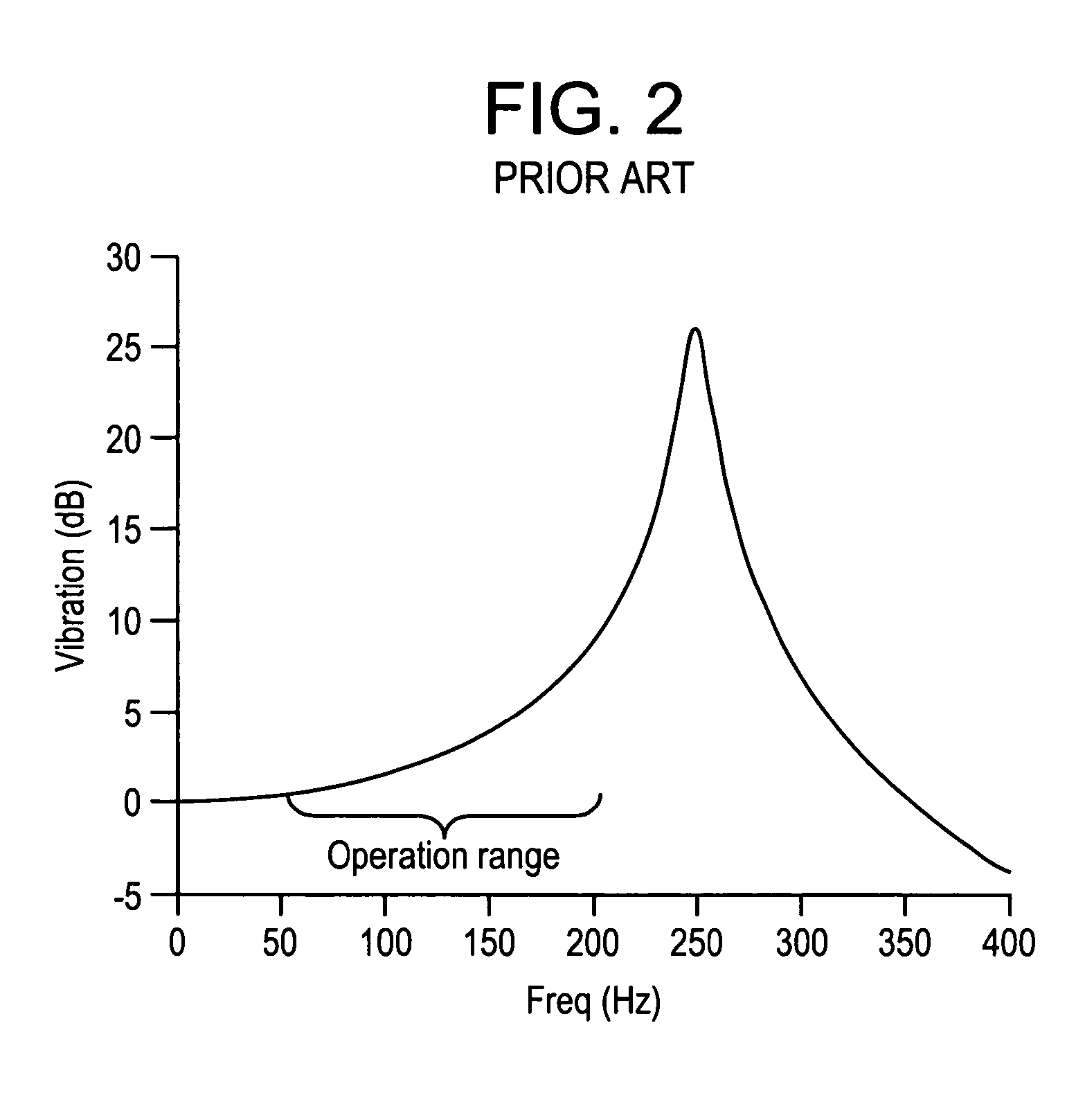Active cancellation and vibration isolation with feedback and feedforward control for an aircraft engine mount
a technology of active cancellation and vibration isolation, which is applied in the direction of vibration suppression adjustment, mechanical equipment, transportation and packaging, etc., can solve the problems of engine fundamental frequency noise generation, tonal noise generation, and engine vibration, so as to prevent engine vibration and dissipate the dynamic energy of tonal vibration
- Summary
- Abstract
- Description
- Claims
- Application Information
AI Technical Summary
Benefits of technology
Problems solved by technology
Method used
Image
Examples
Embodiment Construction
[0018]The present invention will be explained in further detail by making reference to the accompanying drawings, which do not limit the scope of the invention in any way.
[0019]FIG. 1 depicts a hard engine mount conventionally known, and FIG. 2 shows the transmissibility of the hard engine mount, represented as vibration (dB) v. frequency (Hz). FIG. 3 depicts an engine mount 300 having an active element according to an embodiment of the present invention, while FIG. 5 depicts an engine mount according to an embodiment of the present invention, including a representation of a control system for the engine mount. FIG. 4 depicts the transmissibility (vibration v. frequency) of various engine mount configurations and methods. FIGS. 6 and 7 depict simplified representations of an engine mount to a fuselage and wing, respectively, according to embodiments of the present invention.
[0020]Turning now to FIG. 1, a conventional hard engine mount structure 100 is represented as a single degree ...
PUM
 Login to View More
Login to View More Abstract
Description
Claims
Application Information
 Login to View More
Login to View More - R&D
- Intellectual Property
- Life Sciences
- Materials
- Tech Scout
- Unparalleled Data Quality
- Higher Quality Content
- 60% Fewer Hallucinations
Browse by: Latest US Patents, China's latest patents, Technical Efficacy Thesaurus, Application Domain, Technology Topic, Popular Technical Reports.
© 2025 PatSnap. All rights reserved.Legal|Privacy policy|Modern Slavery Act Transparency Statement|Sitemap|About US| Contact US: help@patsnap.com



